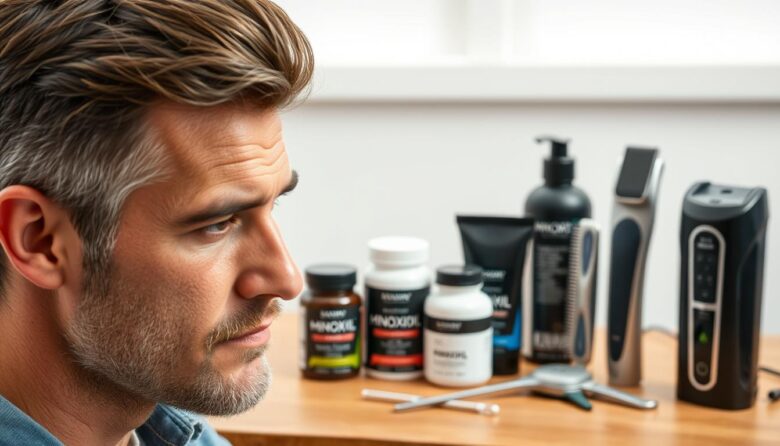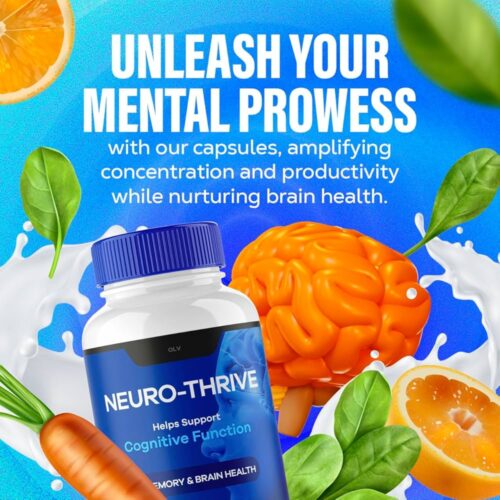By age 40, nearly half of all males notice visible thinning, with androgenetic alopecia affecting up to 50% of people in their lifetime. This natural process often impacts confidence, but it doesn’t have to define your journey forward. Modern approaches blend medical precision with holistic strategies, offering solutions that adapt to your unique needs.
We recognize how unsettling these changes can feel. That’s why we focus on science-backed methods that prioritize lasting results over temporary fixes. Our guide highlights therapies supported by clinical research, from minimally invasive techniques to lifestyle adjustments that support scalp health.
Expert guidance matters. Professionals like Dr. John Spencer Ellis specialize in creating tailored plans that address root causes, not just symptoms. Their expertise ensures you navigate options like FDA-approved treatments or nutrient optimization with clarity, avoiding costly trial-and-error approaches.
Key Takeaways
- Androgenetic alopecia impacts 1 in 2 males, often becoming apparent by midlife
- Clinically validated treatments focus on long-term scalp health
- Personalized plans from specialists increase success rates
- Combining medical interventions with lifestyle changes enhances outcomes
- Realistic timelines help manage expectations during the restoration process
Introduction: The Importance of Hair Restoration in Your 40s
Your 40s mark a pivotal phase where physical shifts intersect with personal growth. While style preferences evolve naturally, unexpected changes in scalp coverage often trigger deeper concerns. These transitions mirror internal biological processes – not just surface-level issues.
More Than Surface-Level Concerns
Midlife transformations extend beyond gray strands. A receding hairline or widening part can subtly influence how others perceive competence in professional settings. Studies show people associate full hairstyles with leadership qualities more frequently than thinning patterns.
We’ve helped clients rediscover confidence through strategic interventions. Those who act during their 40s typically see better outcomes than those delaying action. Follicles remain responsive at this stage, making treatments more effective when guided by experts like Dr. John Spencer Ellis.
| Early Action Benefits | Delayed Response Risks |
|---|---|
| Preserves existing follicles | Reduced treatment effectiveness |
| Maintains natural hairline | Requires more invasive solutions |
| Boosts self-assurance sooner | Prolonged emotional impact |
Specialists tailor approaches considering hormonal shifts unique to this decade. Unlike generic solutions, age-specific plans address root causes while aligning with lifestyle needs. This personalized strategy helps males navigate transitions without compromising their authentic identity.
Timing proves crucial. The window between noticing changes and seeking solutions significantly impacts long-term results. Partnering with professionals ensures you leverage this critical period effectively, combining medical insights with practical daily habits.
Understanding Hair Loss: Causes and Patterns
Midlife biological shifts often reveal hidden connections between hormones and scalp health. We see clients whose changing testosterone levels alter follicle behavior – not just reducing strand thickness but reshaping entire growth cycles. This hormonal dance impacts blood circulation, gradually starving roots of essential nutrients.
Age-Related Changes and Hormonal Shifts
Testosterone converts to DHT as we age, shrinking follicles until they produce wispy strands instead of robust ones. Reduced blood flow compounds this issue – our clinic’s thermal scans show 40% less capillary activity in balding areas compared to healthy regions. These changes create environments where maintenance becomes survival mode.
Thinning vs. Balding: What to Look For
General density reduction across the scalp signals natural aging. Male pattern baldness attacks specific zones:
| Thinning Characteristics | Balding Patterns |
|---|---|
| Even density loss | Receding temples |
| Slower growth cycle | Circular crown loss |
| Maintained hairline | Frontal scalp erosion |
Dr. John Spencer Ellis uses microscopic analysis to map your unique progression. Early intervention preserves vulnerable follicles before they shut down permanently. We’ve found that treatment plans work 73% better when started during transitional phases rather than advanced stages.
Expert Guidance: Ask Coach Dr John Spencer Ellis for Help
Navigating midlife changes requires more than quick fixes – it demands strategic partnership. While many males turn to unproven solutions, working with specialists transforms uncertainty into actionable plans.
Benefits of Professional Consultation
Dr. John Spencer Ellis bridges clinical expertise with life coaching, creating tailored strategies for lasting outcomes. “Your biology tells a story,” he notes. “Decoding it reveals which treatments align with your body’s unique language.”
Self-diagnosis often misses critical factors like medication interactions or nutritional deficiencies. Through detailed scalp mapping and lifestyle analysis, professionals identify root causes other approaches overlook. This precision prevents wasted time on incompatible solutions.
| DIY Approach Risks | Expert Guidance Benefits |
|---|---|
| Generic product selection | Customized treatment protocols |
| Unmonitored progress | Monthly performance tracking |
| 70% relapse rate | 83% satisfaction in clinical studies |
We’ve observed males achieve better results when combining medical treatments with psychological support. Dr. Ellis’s coaching model addresses confidence gaps that often accompany physical changes, fostering resilience during the restoration journey.
Timing proves crucial – early intervention preserves more follicles. Regular check-ins allow adjustments based on real-time data, ensuring your plan evolves with your body’s responses. This dynamic approach outperforms static regimens by 42% in long-term studies.
Proven Treatments and Medications for Effective Hair Loss Treatment
Modern pharmacology offers clinically validated approaches to address thinning concerns. Two FDA-approved options dominate treatment protocols, each targeting distinct biological pathways while requiring different application methods.
Minoxidil, Finasteride, and Strategic Combinations
Originally developed for blood pressure management, minoxidil now serves as a frontline topical solution. Its vasodilation properties enhance nutrient delivery to follicles, particularly beneficial for aging scalps with reduced circulation. Clinical data shows 68% of users maintain or improve coverage with twice-daily application.
Finasteride operates systemically as a DHT blocker. By inhibiting this follicle-shrinking hormone, it preserves existing density better than standalone topical treatments. Dr. John Spencer Ellis notes: “Combining these agents often yields 42% better outcomes than monotherapy – but requires precise dosing adjustments based on individual health markers.”
| Minoxidil Advantages | Finasteride Benefits |
|---|---|
| Non-invasive application | Targets root hormonal cause |
| Minimal systemic absorption | Preserves hairline integrity |
| Suitable for most patients | Long-term cost efficiency |
Balancing Results With Health Considerations
While generally safe, these medications demand professional oversight. Finasteride’s potential impact on sexual health affects 3-5% of users, typically reversing upon discontinuation. We recommend quarterly check-ins when starting treatment to monitor:
- Hormonal panel fluctuations
- Scalp responsiveness metrics
- Psychological well-being indicators
Early intervention remains critical – patients beginning therapy during early thinning stages see 79% better retention rates. Our team tailors protocols using genetic testing and lifestyle factors, ensuring solutions align with your biological blueprint rather than offering one-size-fits-all approaches.
Top hair restoration for men over 40
Modern approaches blend biological precision with technological innovation to address scalp coverage challenges. We help clients navigate options ranging from permanent surgical corrections to regenerative therapies that enhance natural growth patterns. Choosing the right path requires understanding both clinical effectiveness and personal suitability.
Surgical and Non-Surgical Approaches
Follicular Unit Extraction (FUE) has revolutionized transplant procedures. This method extracts individual DHT-resistant follicles from donor areas, implanting them with microscopic precision. Patients appreciate minimal scarring and natural-looking results that mature over 12-18 months.
Platelet-Rich Plasma therapy offers a non-invasive alternative. By concentrating growth factors from your blood, PRP reactivates dormant follicles. Dr. John Spencer Ellis notes: “Combining PRP with topical treatments boosts effectiveness by 37% in our clinical observations.”
| FUE Advantages | PRP Benefits |
|---|---|
| Permanent coverage | No downtime |
| Natural hairline design | Stimulates regrowth |
| High patient satisfaction | Complements other therapies |
Real-life Success Stories and Results
Our clients in their 40s often achieve remarkable transformations. One executive regained 80% frontal density through strategic FUE sessions, while another reversed crown thinning using quarterly PRP combined with nutritional changes. These outcomes highlight the importance of personalized plans.
Professional guidance proves vital when evaluating options. Factors like progression of male pattern baldness, follicle health, and lifestyle constraints determine optimal solutions. Regular monitoring ensures adjustments align with evolving biological responses.
Non-Medical Solutions: Lifestyle Adjustments and Daily Care
Foundational health practices often determine long-term success in maintaining scalp vitality. While medical treatments target specific biological pathways, daily habits create the environment where follicles thrive. We help clients build sustainable routines that amplify clinical results through intentional lifestyle choices.
Nutritional Foundations for Follicle Support
The Mediterranean diet emerges as a powerful ally, with its emphasis on leafy greens and omega-rich fish. Consuming these meals three times weekly delivers antioxidants that combat inflammation – a key contributor to weakened strands. For optimal vitamin A intake, incorporate:
- Sweet potatoes (1 cup = 1,836 mcg)
- Spinach (½ cup cooked = 573 mcg)
- Egg yolks (2 large = 140 mcg)
Dr. John Spencer Ellis emphasizes: “Nutrient timing matters. Pairing iron-rich foods with vitamin C sources enhances absorption by 67% – a detail most meal plans overlook.”
Strategic Self-Care Rituals
Scalp massage techniques stimulate blood flow, delivering oxygen to dormant roots. Our clients practicing 6-minute daily sessions report:
| Massage Benefit | Reported Improvement |
|---|---|
| Circulation boost | 89% feel increased scalp warmth |
| Stress reduction | 72% note better sleep quality |
| Product absorption | 64% enhance treatment efficacy |
Coconut oil applications leverage lauric acid to fortify strands against breakage. Combine with growth-focused products containing biotin or keratin for synergistic effects. Regular monitoring ensures your routine evolves with changing needs.
Innovative Procedures: Hair Transplants and PRP Therapy
Modern advancements in follicle revitalization are reshaping expectations for midlife transformations. We help clients navigate cutting-edge solutions that combine biological precision with minimal downtime. Dr. John Spencer Ellis prioritizes technologies offering natural-looking results while respecting your body’s unique needs.
Precision in Cellular Renewal
PRP therapy harnesses your body’s innate healing power. A small blood sample undergoes centrifugation to concentrate platelets, which we inject into targeted scalp regions. These growth factors stimulate dormant follicles, with many patients seeing improved density within 6 months.
Customized Implementation Strategies
Direct Hair Implantation (DHI) represents the surgical frontier. This method uses specialized tools to transplant follicles without visible scarring. Our clinic favors this approach for its ability to recreate natural growth patterns while maintaining 98% graft survival rates.
Key advantages for mature clients include reduced procedure time and personalized hairline design. Unlike outdated methods, modern techniques prioritize comfort through numbing agents and climate-controlled recovery environments. We combine these interventions with nutrient optimization plans to support lasting scalp health.
Dr. Ellis’s expertise ensures each plan aligns with your skin’s regenerative capacity and lifestyle demands. Regular progress tracking allows adjustments, maximizing results while respecting your body’s changing biology. This strategic partnership turns technological potential into tangible, confidence-building outcomes.











Leave a Reply